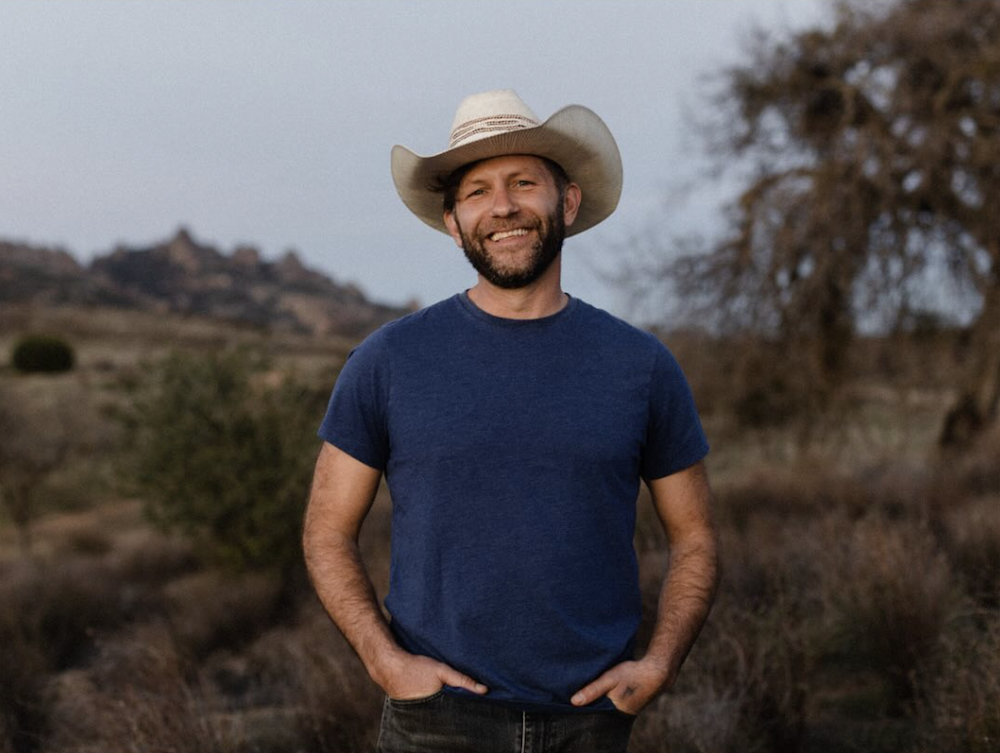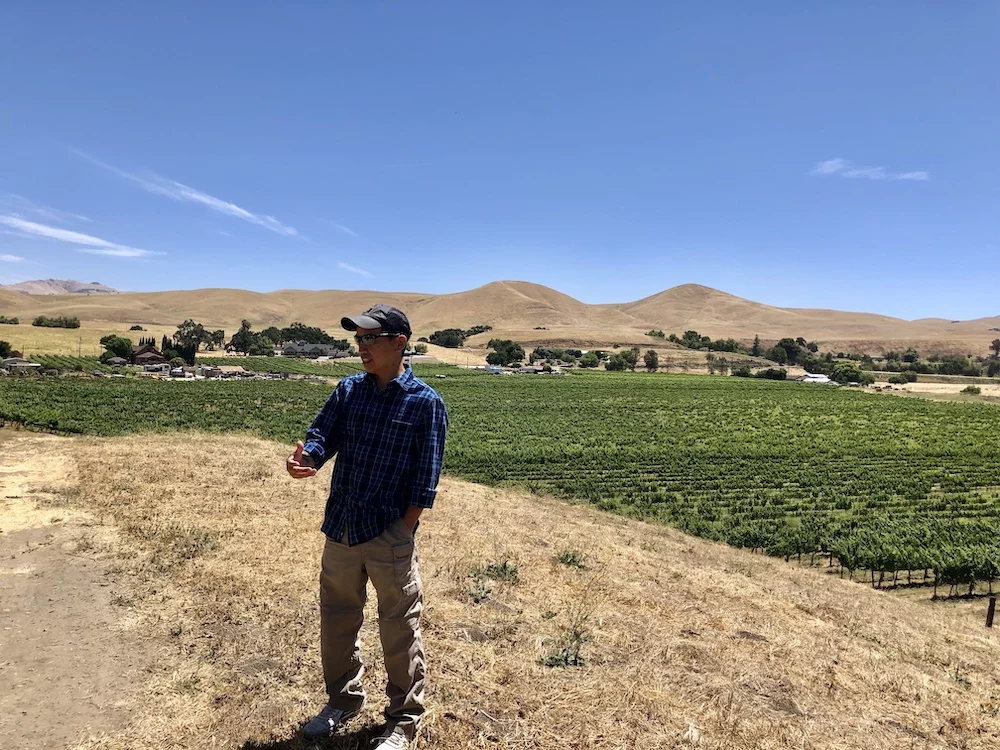
October 4, 2024 – The seismic shift in the wine industry is hitting close to home. The announcement of a prized piece of vineyard history in San Benito County, Siletto Vineyards, suddenly going from a sought after candyland supplier of the unique and unusual, to being put up for sale, is symptomatic of the state of the wine industry in general.
Many local vineyards are still trying to sell fruit, and will be forced to crush and make bulk wine or let the birds have it. There is no denying it: the glut of grapes is huge. The convergence of declining wine consumption combined with the optimistic overplanting of vines is taking its toll, not just in California but around the world. The French are pulling vines and the Spanish are dumping wine.
Recently, I visited a vineyard in the Sierra Foothills that is capable of producing 700 tons of fruit. They had only sold 30 tons by September, most of it Sauv Blanc. The rest, all reds, would create a delicious buffet for the creatures of the wild. The owner already had gallons of bulk wine in tank, unsold.
Even if vineyards aren’t on the block just yet, there will be more, predicts Monterey-based winemaker Ian Brand. It’s a matter of economics.
“There will be more vineyards like this that end up as collateral damage while waiting for the California wine industry to right-size,” says Brand. “The last time this happened was in the 1980s. There was a lot of pulling out and leaving fallow during that period.”
The cost of farming has to be offset by grape sales. Farming is especially costly when you are talking about old vines that can be greatly impacted by weather vagaries. They can be generous one year, average the next, and then take a real dive, delivering a gut punch to the grower who has promised every precious grape to a loyal winemaker who has built up a following for the resulting offbeat wines.
In the case of Siletto, it was a perfect storm of a bad fruit set this season and the family just wanting to cut their losses and move on. Brand says that after proprietor Ron Siletto passed away, his two sons had worked on stabilizing things and finding customers, himself among them. Having Nat Wong caretake the vines and act as ambassador for the vineyards helped drive more niche buyers for the incredible cornucopia of awesome varietals that Ron had planted. Now all those boutique wines, including Wong’s own Blade & Talon label, are in jeopardy.
“Nat and John put their backs into it and it was a legacy they wanted to continue,” says Brand. “But between rising costs and inconsistent yields, they struggled to make it pencil out. Especially low yields put a nail in the coffin.”
There is just no way to backfill. When someone wants Frapatto, you can’t sell them Cabernet.
“This is a huge loss in terms of a quality vineyard with unusual varieties,” he says, adding there is a prospective buyer for the certified old vine Wheeler Vineyard, which is 50 years old as of 2024.

Brand is working to try to save 11 acres of the old vine Cab and says he is weighing whether to take on farming. The Bolado section of the vineyard is for sale, as well as the upper vineyard. They will give up the lease on the Calleri section. “Like many vineyards, it may end up going untended.”
It won’t be the first such abandoned vineyard that has come to our attention. Currently, Heart of The Mountain has not been farmed since the former winemaker who had taken over maintenance of the property, Brandon Armitage, apparently called it quits.
Winemaker Andrew Brenkwitz says he recently picked some Pommard clone Pinot Noir from that vineyard and although it was pretty “beat up and gnarly,” he is giving it a go. He’s a sucker for gorgeous old vineyards and is weighing the options of farming it going forward. Otherwise, that vineyard will join the Pichon Vineyard above Lexington Reservoir, formerly farmed by Burrell School Vineyards, in being left to wild.
What happens to vineyards that are left unmanaged? Most just turn to bedraggled overgrown weed patches. Nature reclaims her own. There is one old Pinot Noir vineyard I know that was successfully reclaimed by a very determined winemaker and land owner up in Anderson Valley. Jeff Hansen of Lula Cellars, who passed away in 2018, called it “The Rescue Block.” In a testament to his vision and the elbow grease of those who have tended it since his passing, it makes amazing wine.
But is amazing wine enough to save wine as we know it?
“Across the board in the wine industry, it is evident that our models are not working anymore,” says Brand. “There will be a lot of heartache if we don’t see a wholesale turnaround in the next year. We will see a lot more wineries calling it quits. The way many wineries have dealt with this is to cancel fruit contracts. Vineyards are feeling it first and it ripples up the food chain.”
Brand sees this is the natural end result of the commodification of wine. “Instead of treating it as a natural artisan thing that came from a specific place, it is now an international commodity. This grew out of the post war generation of Boomers, with their tremendous purchasing power. Given the economic constraints and interests of different generations, we have to change to meet demand.”
Toss in the pandemic, which caused a wine buying frenzy that saw consumers, eager for adventure in their glass, experimenting and indulging in things they had never tried before. Flush with cash as they weren’t eating out and traveling, they set a tone that triggered what can now be clearly seen as overproduction in anticipation that the E-ticket ride would continue unabated. Then came inflation.
In the face of this cataclysmic change, he thinks it might be an invitation to return to fundamentals. “It’s a necessary reset, and it’s time to get away from smoke and mirrors and the emphasis on opulence and overdone wines that have become endemic in the wine business, and instead get back to what is special about it. Focus on the connection to site. This is a craft that comes from somewhere.”
In short, says Brand, “We need to find a different model.”
Just what that is will be much debated as it morphs into being. Just as nobody saw Prohibition coming until it was too late, and likewise, just as nobody knew what would happen after it ended, this metamorphosis will be fascinating to watch. More importantly, we will all be part of it with every choice we make.
About the author
Laura Ness is a longtime wine journalist, columnist and judge who contributes regularly to Edible Monterey Bay, Spirited, WineOh.Tv, Los Gatos Magazine and Wine Industry Network, and a variety of consumer publications. Her passion is telling stories about the intriguing characters who inhabit the fascinating world of wine and food.
- Laura Nesshttps://www.ediblemontereybay.com/author/lness/
- Laura Nesshttps://www.ediblemontereybay.com/author/lness/
- Laura Nesshttps://www.ediblemontereybay.com/author/lness/
- Laura Nesshttps://www.ediblemontereybay.com/author/lness/


